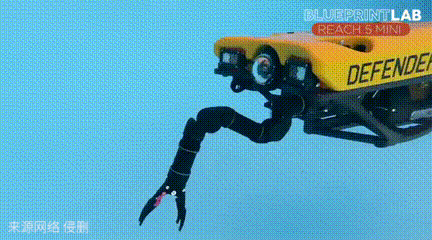Underwater optical 3D motion capture systems can accurately track the movement and collect pose data of targets such as ship models and biomimetic robotic fish on large water surfaces and underwater. They provide real-time feedback on the position and angle of targets and export the data to other software (MATLAB, C++, etc.) for secondary development and application.

For 3D spatial positioning of target objects, depending on the type of object being captured and the size of the space, one may choose between aquatic motion capture and underwater motion capture solutions.
1 Water surface optical motion capture system solutions
When targets operate in shallow water or are partly or fully floating, reflective markers can be placed above the water surface or extended using a Rig support. These are then located using motion capture cameras positioned above the pool, obtaining the target's 3D spatial coordinates.
Application Scenarios
1.1 Underwater Suspended Tunnel Deformation Measurement

Underwater suspension tunnels are large cross-sea traffic structures that float in the water, mainly designed to solve the problem of crossing deep and wide water areas in the future. The primary concern is safety, ensuring structural stability under complex dynamic loads such as waves and currents, as well as exceptional loads from submarine impacts and shipwrecks. A motion capture system is used to obtain high-precision measurements of the tunnel's movement and deformation, providing research data for stability studies under different external environments.
1.2 Shipbuilding
Tracking the motion of ships under different wave, tidal current, and wind conditions is fundamental research in fluid dynamics laboratories or during the ship manufacturing process. By studying the motion of the ship's scale model (ship model) in a wavemaking tank, and testing the ship model's motion characteristics under various conditions (such as different wave types, wave speeds, wind speeds), one can predict the actual performance information of ships, provide performance optimization samples, and reduce research and development time and costs in ship manufacturing engineering.

1.3 Study of the phenomenon of free vortex-induced motion of buoyancy cylinders
As a typical underwater structure, the buoyancy canister is an important component of deep-water oil and gas development systems and a key structure for various riser configurations. When the seawater exerts forces on the buoyancy canister, it causes a six-degree-of-freedom motion of the canister, known as "vortex-induced motion". When the shedding frequency of the vortices approaches the natural frequency of motion, a "lock-in phenomenon" occurs, leading to an increase in the amplitude of the buoyancy canister's motion, which can subsequently cause damage to the canister.
To study this phenomenon, towing tank tests can be conducted where motion capture systems measure the six degrees of freedom of a buoyancy cylinder at different flow speeds. This allows for the analysis of the cylinder's downstream movement, lateral movement, and pitching motion characteristics, including time-displacement curves, motion trajectories, frequency, amplitude Strouhal number, and resistance changes.
2 Underwater optical motion capture system solutions
In addition to the three types of devices mentioned earlier, some gait laboratories are also equipped with plantar pressure distribution systems and cardiopulmonary exercise testing equipment to provide more comprehensive information for gait analysis.
Application Scenarios
2.1 Underwater biorobotic research algorithm validation

Due to the characteristics of serpentine robots, which include multiple joints and superfluous degrees of freedom, as well as the highly complex and nonlinear physical properties of aqueous environments, observing the robot's movement in experiments, acquiring motion parameters, and optimizing the robot's control strategies through experiments pose certain challenges. By adopting a 3D motion capture system, the underwater serpentine robot's movements and joint postures can be precisely captured. Comparing these with joint postures derived from joint sensor data validates the accuracy of sensor data fusion and posture estimation algorithms.
2.2 Underwater Vehicle Formation

In the observation formations of underwater robots/unmanned vehicles, acquiring environmental data from different spatial points at the same moment can significantly improve the precision of ocean environmental models. The key to research in underwater formation systems lies in the coordination and collaboration among individuals within the swarm. Collaborative control is mainly reflected in the overall formation and trajectory planning for multiple underwater robots/unmanned vehicles, requiring them to complete marine tasks according to the set formation patterns and trajectories. Cooperative control requires a high-precision navigation and positioning system to obtain position information of oneself and other vehicles. During model experiments in a laboratory setting, the NOKOV motion capture system can act as an underwater positioning system, providing sub-millimeter accuracy in 3D spatial information for multiple rigid bodies, which is utilized for research in formation motion planning.
2.3 Fishing Net Effectiveness Evaluation

The effectiveness of an underwater enclosure, composed of enclosure ropes and nets, depends on the ability of the enclosure ropes to maintain the movement path within the net. By altering the physical properties, layout patterns, and towing speeds of the ropes, the underwater optical motion capture camera system can capture positional data changes in the rope capture area. Experimental results from the pool can be compared with data obtained from finite element simulation models.